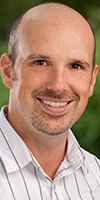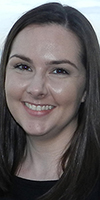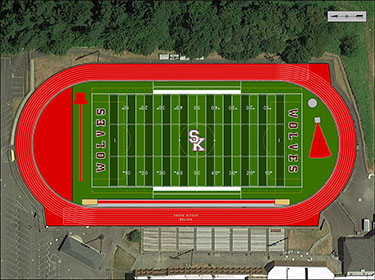|
Subscribe / Renew |
|
|
Contact Us |
|
| ► Subscribe to our Free Weekly Newsletter | |
| home | Welcome, sign in or click here to subscribe. | login |
Construction
| |
 |
August 20, 2015
The grass is actually greener for schools that install synthetic turf
AHBL

Nason
|

Zuger
|
Many school districts are embracing the benefits of synthetic turf fields, including lower maintenance and more durable playing surfaces than natural grass.
The Pacific Northwest’s rainy weather can do a number on natural grass athletic fields, rendering them essentially useless during the winter months. This, coupled with the high cost to maintain a natural grass field, makes synthetic turf fields a great option for school districts.
Synthetic fields need less maintenance and require much less water. According to a 2011 report by the Synthetic Turf Council, a full-size synthetic field can save anywhere between 500,000 and 1 million gallons of water a year.
As water conservation continues to encourage more sustainable solutions, synthetic turf fields can be a great option for school districts.
What to consider
There’s no doubt about it, installing a synthetic turf field is an investment. District officials need to be informed of all their options before making the switch, and should consider elements such as maintenance, cost and player performance.
Synthetic turf manufacturers have improved their products considerably, and there are now several options to choose from when deciding what kind of field to install.
The type of turf and infill selected would depend on the field’s use — whether it’s used for multiple sports or for a specific sport like soccer or baseball. And while synthetic fields have a high initial cost, there are funding options available through grant programs or purchasing co-ops.
Another consideration is schedule. Installation can be accomplished during the summer months, but design and permitting need to start at least six months before installation can begin. Depending on the jurisdiction, permitting can take up to three months.
The installation of a synthetic field, or replacement of a natural turf field with a synthetic field, can trigger a variety of permitting requirements and potentially stormwater system upgrades. If existing stormwater facilities exist, the project may only require a simple grade and fill permit. Sites without existing stormwater infrastructure may need conveyance and stormwater control facilities.
The Synthetic Turf Council reports that fields often pay for themselves within three to four years, and can be used for up to 3,000 hours of play per year with no rest time required. You would need three to four natural grass fields to allow for that amount of play.
Going organic
As sustainable options become more popular and cost effective, there are organic options available.
AHBL, along with Hellas Construction, recently designed a new turf field for South Kitsap High School in Port Orchard. The district chose a Matrix Turf field with the all-organic GeoPlus infill. This will be the first project of its kind in our state, and one of 16 fields in the nation to have this installed.
The organic infill is made up of coconut fibers and cork, and is more similar to natural soil than rubber infill in that it is less spongy and bouncy, and provides excellent footing, traction and shock absorption.
The life of the field is about eight to 12 years, and when it comes time to replace the field, rather than shipping all the materials to a landfill, the turf can be recycled and the infill can be repurposed. Once removed the infill can be mixed in with any landscape or gardening application, creating another useful life that is both environmentally friendly and sustainable. In addition, it can be spread over existing natural grass fields to enhance these playing surfaces.
Softness required
Safety and performance are the highest priorities when designing any element of a K-12 project.
A critical component of good field design is confirming a field has the required “softness,” or what is technically referred to as G-max. A G-max value indicates how much force a player experiences when hitting the surface. This has become increasingly important as people have become more aware of concussion hazards.
For any synthetic turf system, the depth of the turf, type of infill and use of shock pads below the turf help manage the G-max of the field. Additionally, recent studies by both the NCAA and FIFA have shown the injury risk playing on synthetic turf is no greater than natural grass.
An added benefit of the organic components found in the Hellas GeoPlus infill is that it helps to reduce field temperatures by up to 40 degrees by reducing heat absorption and retaining humidity. Fields that use recycled tires or other types of infill can become much warmer than the ambient air.
Maintaining the turf
As with any surface, synthetic turf needs to be cleaned and maintained. Maintenance ensures the field’s longevity, playing performance and safety. Depending on the turf and infill chosen, a district may need to purchase special equipment to redistribute infill or clean the turf. Service contracts are available to help take care of fields; however, with the right equipment, maintenance can be accomplished with existing facilities staff.
South Kitsap’s field will need to be watered because of the organic components of the infill, and the infill of any synthetic turf field will need to be redistributed to ensure playability and safety.
To date there are more than 11,000 synthetic turf fields in the United States. For school districts, these fields help save money and resources, and have provided student athletes with a playing surface that is safe and reliable.
Gone are the days where athletes slip and slide on a muddy field, or worry about twisting their ankle on a field riddled with divots. Today there are clean, safe and reliable options that help these young athletes perform at their best.
David Nason is project manager at AHBL,and has 17 years of civil engineering experience. Nichole Zuger-Cheney is a marketing professional at AHBL with eight years of industry experience.
Other Stories:
- Landmark Paul Thiry school reopens to students after 34 years
- New Vancouver high school prepares students for careers in health care
- Students have their say in Seattle school project
- High-tech tools help contractors keep up as school construction booms
- A ‘third place’: where students can be themselves
- Six trends shaping the future of campus design
- Bellevue College will open its first on-campus housing in 2018
- How to make existing schools healthier, more efficient
- You can have a safe school theater — even on a budget
- How to design schools to prepare kids for careers that don’t exist yet



